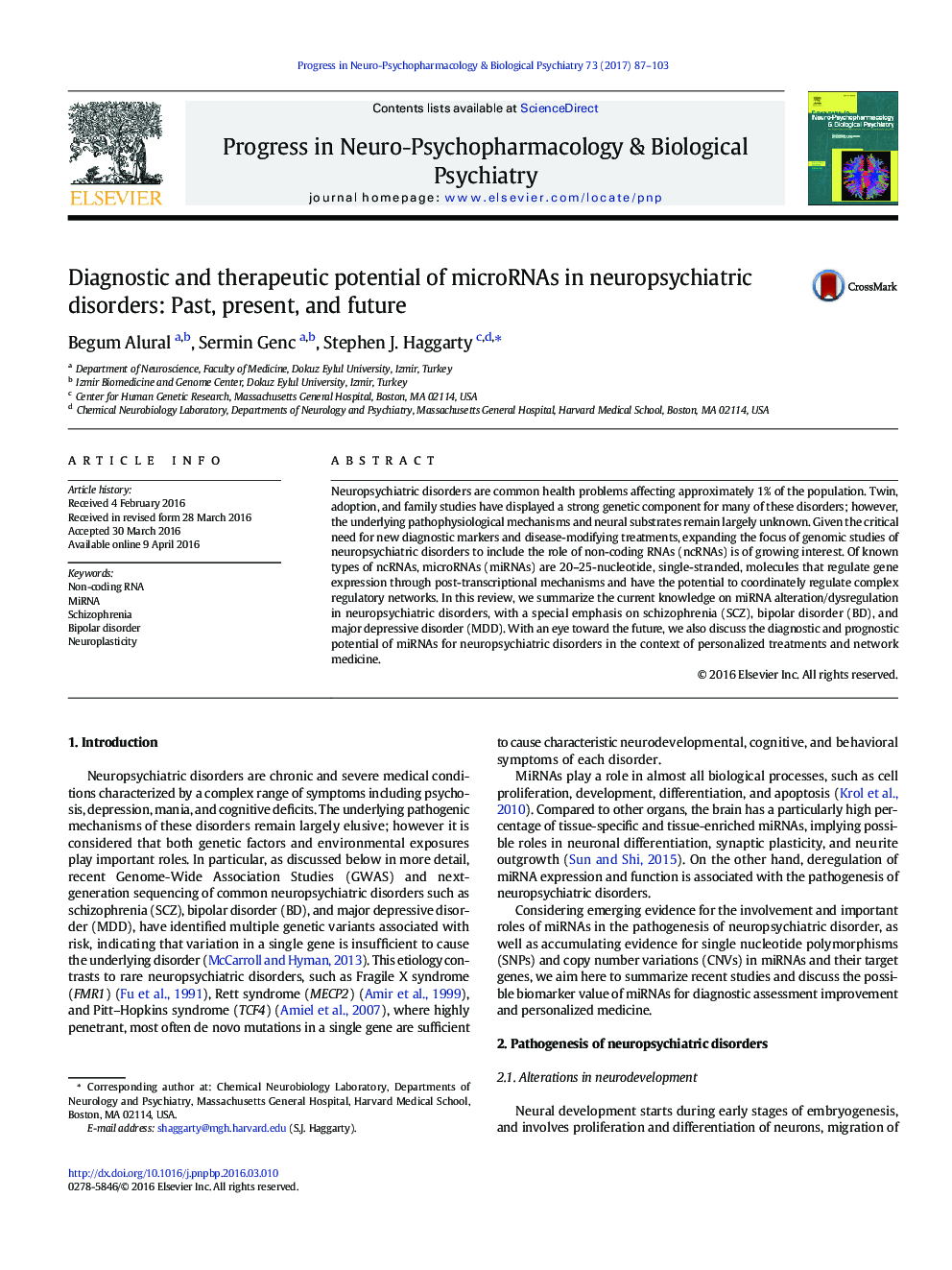| Article ID | Journal | Published Year | Pages | File Type |
|---|---|---|---|---|
| 5558012 | Progress in Neuro-Psychopharmacology and Biological Psychiatry | 2017 | 17 Pages |
â¢Multiple genetic and epigenetic factors have pivotal roles in pathogenesis of neuropsychiatric disorders.â¢MicroRNAs (miRNAs) regulate various physiological processes in the central nervous system at the post-transcriptional level.â¢Mutations in miRNA genes, and dysregulated miRNA expression are linked to pathogenesis of neuropsychiatric disorders.â¢Deregulated miRNAs may be used for diagnosis, monitoring prognosis and predicting drug response.
Neuropsychiatric disorders are common health problems affecting approximately 1% of the population. Twin, adoption, and family studies have displayed a strong genetic component for many of these disorders; however, the underlying pathophysiological mechanisms and neural substrates remain largely unknown. Given the critical need for new diagnostic markers and disease-modifying treatments, expanding the focus of genomic studies of neuropsychiatric disorders to include the role of non-coding RNAs (ncRNAs) is of growing interest. Of known types of ncRNAs, microRNAs (miRNAs) are 20-25-nucleotide, single-stranded, molecules that regulate gene expression through post-transcriptional mechanisms and have the potential to coordinately regulate complex regulatory networks. In this review, we summarize the current knowledge on miRNA alteration/dysregulation in neuropsychiatric disorders, with a special emphasis on schizophrenia (SCZ), bipolar disorder (BD), and major depressive disorder (MDD). With an eye toward the future, we also discuss the diagnostic and prognostic potential of miRNAs for neuropsychiatric disorders in the context of personalized treatments and network medicine.
